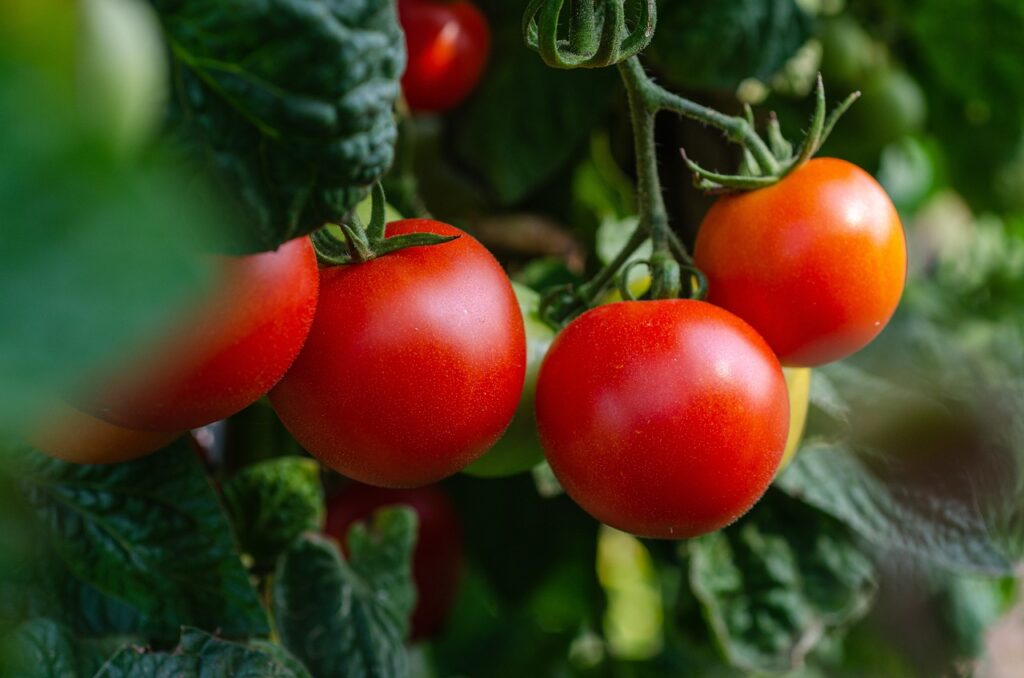
That first bite of a sun-warmed fruit picked straight from the vine is incomparable to anything you’ll find in stores. Whether you’re working with a spacious garden plot or just a sunny windowsill, tomatoes can thrive in various settings with the right care.
Understanding Your Growing Space
Success with tomatoes starts with understanding your specific growing conditions. Those plump, juicy fruits in the photo represent the potential reward, but getting there requires matching the right varieties to your space.
For container growers, determinate (bush) varieties like ‘Roma’ or ‘Tiny Tim’ stay compact while still producing plenty of fruit. If you’ve got more space in a garden bed, indeterminate varieties like ‘Brandywine’ or ‘Sun Gold’ will keep producing until frost cuts them short.
The Basics: What Tomatoes Need
Regardless of where you’re growing, tomatoes have some non-negotiable requirements:
- At least 6-8 hours of direct sunlight daily
- Consistent moisture (but not waterlogged soil)
- Regular feeding with balanced fertilizer
- Support for stems as they grow
- Protection from extreme temperatures
Container Growing: Making the Most of Limited Space
Many urban gardeners assume tomatoes are off-limits without a proper garden, but containers offer surprising versatility. A five-gallon bucket with drainage holes can easily support a productive tomato plant on a balcony or patio.
The key to container success is consistent watering. Pots dry out faster than garden soil, sometimes requiring daily watering during hot weather. A layer of mulch on top helps retain moisture and reduces this maintenance burden.
In-Ground Growing: Maximizing Production
Garden beds offer tomatoes the space to reach their full potential. Prepare your soil by incorporating compost several weeks before planting, and consider a soil test to identify any nutrient deficiencies specific to your plot.
Plant deeply—tomatoes can develop roots along their stems when buried, creating stronger plants. Space them at least 18-24 inches apart to ensure good air circulation, which helps prevent disease.
Regional Adaptations: Growing Where You Are
The growing season varies dramatically across regions. Cool-climate gardeners should choose quick-maturing varieties like ‘Early Girl’ or use season-extension techniques like row covers. In hot climates, heat-tolerant varieties like ‘Arkansas Traveler’ or afternoon shade can prevent blossom drop during the hottest months.
Common Challenges and Simple Solutions
Even experienced gardeners encounter issues with tomatoes. Blossom end rot (dark, sunken spots on fruit bottoms) usually indicates calcium deficiency or inconsistent watering. Cracked fruits typically result from irregular watering—the plants swell too quickly after a dry spell.
Prevention is always easier than treatment, so maintain consistent soil moisture and apply a balanced organic fertilizer according to package directions.
Harvesting for Peak Flavor
The tomatoes in the photo have reached that perfect stage of ripeness—fully colored but still firm. For best flavor, allow your tomatoes to fully ripen on the vine. They should give slightly to gentle pressure and come away easily from the stem with a slight twist.
Growing tomatoes connects us to the seasonal rhythms of nature and rewards patience with unmatched flavor. Whether your tomato plant sits on a kitchen counter or sprawls across a garden bed, that first harvest makes all the effort worthwhile.

